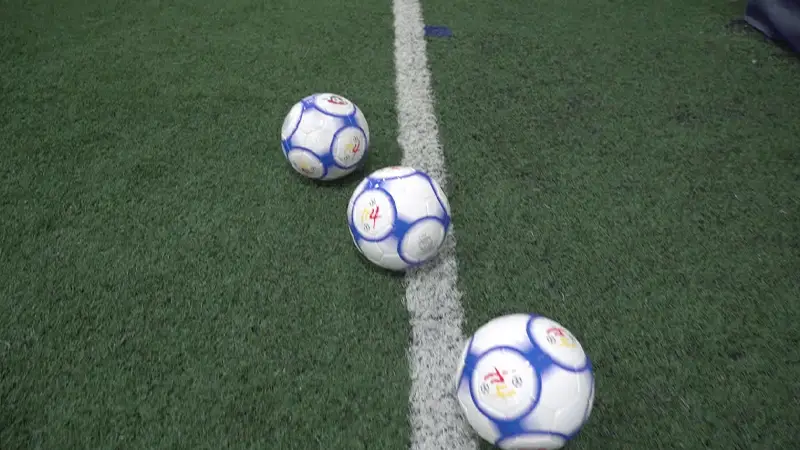When it comes to the game of soccer, understanding the out of bounds rules is crucial for players, coaches, and fans alike. These rules dictate what happens when the ball goes beyond the boundaries of the field, impacting the flow and outcome of the game.
Whether it’s a throw-in, a goal kick, or a corner kick, knowing how these rules work can make a significant difference in a team’s performance.
In soccer, the out of bounds rules not only determine how the game is restarted but also offer strategic opportunities for teams to gain an advantage over their opponents.
From creating scoring chances to regaining possession, mastering these rules can elevate a team’s gameplay to the next level. By delving into the nuances of out of bounds regulations, players can enhance their tactical awareness and overall understanding of the sport.
What Are Out of Bounds Rules in Soccer
Out of bounds rules in soccer dictate what happens when the ball goes beyond the field boundaries, impacting game restarts and possession. Here’s a summary:
Throw-Ins
When the ball goes out of bounds along the sideline, the opposing team is awarded a throw-in. A player from the team opposite to the one that last touched the ball throws it back into play using both hands from behind their head. Players must keep both feet on or behind the touchline.
Goal Kicks
A goal kick is awarded to the defending team when the attacking team kicks the ball out over the goal line, without scoring. The ball is placed inside the goal area, and a player from the defending team kicks it back into play from anywhere inside the six-yard box.
Corner Kicks
When the defending team is last to touch the ball before it crosses the goal line without scoring, a corner kick is awarded to the attacking team. The ball is placed within the corner arc nearest to where it went out, and a player from the attacking team takes the kick.
Offside
While not directly related to out of bounds, the offside rule plays a crucial role in regulating player positions. A player is offside if they are nearer to the opponent’s goal line than both the ball and the second-to-last opponent when the ball is played to them.
Enforcement and Fair Play
Understanding out of bounds rules is essential for fair play and effective gameplay. Being aware of how these rules work ensures that players, coaches, and fans have a solid grasp of the game’s dynamics and can strategize accordingly to succeed on the field.
Identifying When the Ball Goes Out of Bounds
In soccer, understanding when the ball goes out of bounds is crucial for all involved parties. It determines game restarts and strategic advantages, influencing gameplay significantly.
Ball Crossing the Sidelines
When the ball crosses the sidelines, it is considered out of bounds. The assistant referee typically signals this by raising the flag vertically. A throw-in is then awarded to the opposing team to restart play.
Ball Crossing the Goal Lines
If the ball crosses the goal lines and enters the goal, a goal is awarded. However, if the ball goes out over the goal line but not into the goal, it results in a goal kick or a corner kick depending on which team touched it last.
Special Cases Involving the Corner Flags
In special cases involving the corner flags, if the ball hits the corner flag and remains in play without fully crossing the goal line or the sideline, it is still considered in play. Players can use the corner flag strategically to control the ball’s direction and maintain possession.
Consequences of the Ball Going Out of Bounds
When the ball goes out of bounds in soccer, it results in immediate game stoppages, which serve several important purposes:
Immediate Halts in Play
The referee stops the game to assess the situation. This pause allows for determining which team should be awarded possession based on the rules governing throw-ins, goal kicks, or corner kicks.
Opportunity for Strategic Planning
Players and teams use this momentary stoppage to regroup, strategize, or make tactical adjustments. This can include setting up for a throw-in play, organizing defensive positions for a goal kick, or planning an offensive strategy for a corner kick.
This strategic planning can potentially shift the momentum of the game in their favor.
Throw-ins, Goal Kicks, and Corner Kicks
Depending on which boundary line the ball crosses, specific rules dictate how possession is awarded:
- Throw-ins: Awarded to the opposing team of the player who last touched the ball before it went out along the sideline.
- Goal Kicks: Awarded to the defending team when the attacking team last touched the ball before it crossed the defending team’s goal line without scoring.
- Corner Kicks: Awarded to the attacking team when the defending team last touched the ball before it crossed their own goal line without scoring.
Fair Play and Officiating
Referees play a critical role in ensuring fair play and making accurate decisions regarding possession after the ball goes out of bounds. Their rulings contribute to maintaining sportsmanship and adherence to the rules of the game
Procedures Following an Out of Bounds
When the ball goes out of bounds in soccer, specific procedures come into play, dictating how the game restarts and ensuring fair play.
Throw-Ins: Execution and Restrictions
Throw-ins in soccer require players to use both hands from behind their head, staying behind the touchline for a fair play restart.
Execution
During a throw-in, a player from the team opposite to the one that last touched the ball throws it back into play using both hands from behind their head. The player must have both feet on or behind the touchline and maintain contact with the ground during the throw.
Restrictions
The thrower must deliver the ball from the point where it exited the field and cannot score directly from a throw-in. Additionally, the opposing team must allow a minimum distance for fair play.
Goal Kicks: Setup and Rules
Goal kicks in soccer involve a defender kicking the ball from the goal area, aiming to restart play strategically.
Goal Kicks
- Setup: A goal kick is taken by a defending player from within the goal area after the attacking team last touched the ball before it went out of bounds over the goal line, without resulting in a goal.
- Rules: The ball must initially be stationary within the goal area and kicked beyond the penalty area. The opposition must remain outside the penalty area until the ball is in play.
Corner Kicks
- Strategy: Corner kicks offer teams a strategic advantage to create scoring opportunities. It is a set-piece where a player from the attacking team kicks the ball from the corner flag into play, aiming to assist a teammate in scoring.
- Rules: The corner kick must be taken within the corner arc nearest to where the ball went out of play. Opponents must remain 10 yards (9.15m) from the corner arc until the ball is in play. The ball is considered in play once it is kicked and moves.
Player and Ball Interaction Near Boundaries
Player and ball interactions near boundaries in soccer require careful navigation to avoid turnovers and maintain possession effectively.
Player Contact with the Ball on the Boundary Line
When a player’s foot or any part of their body touches the boundary line, they are considered out of bounds. However, the ball is still in play as long as it has not completely crossed the boundary line.
Players need to be aware of this distinction to prevent turnovers and maintain possession for their team.
Player Going Out of Bounds with the Ball
If a player carries the ball out of bounds, either by dribbling it or holding it, possession is awarded to the opposing team through a throw-in. This rule ensures fair play and prevents teams from gaining an unfair advantage by deliberately taking the ball out of play.
Players must exercise caution near the boundaries to avoid losing possession and giving the opposing team an opportunity to restart the game.
Officiating Out of Bounds Scenarios
In soccer, the role of linesmen is integral in officiating out of bounds scenarios. They assist the main referee in making crucial decisions regarding ball placements and player positions along the touchlines and goal lines.
Role of the Linesmen
Linesmen, also known as assistant referees, are responsible for determining when the ball has crossed the boundaries of the field. They help the main referee in making accurate calls on throw-ins, goal kicks, and corner kicks.
Common Referee Decisions and Signals
Referees in soccer use specific signals to indicate out of bounds scenarios.
Common signals include pointing the flag towards the direction the ball crossed the boundary line for throw-ins or goal kicks, raising the flag horizontally to signal an offside position, and awarding corner kicks by pointing their arm towards the corner flag.
Referees play a crucial role in ensuring fair play and enforcing rules related to out of bounds situations.
Frequently Asked Questions
What are out of bounds rules in soccer?
Out of bounds rules in soccer define when a player or the ball is considered out of play by crossing the touchline or goal line boundaries. This results in game stoppage and restarts, such as throw-ins, goal kicks, or corner kicks, depending on which team last touched the ball.
Why is understanding out of bounds rules important in soccer?
Understanding out of bounds rules is crucial as it contributes to fair play, game flow, and strategic advantages in soccer. Knowing how these rules affect play restarts, player positioning, and scoring opportunities enhances tactical awareness and effective gameplay.
What is the offside rule in soccer?
The offside rule in soccer aims to prevent players from gaining an unfair advantage by staying closer to the opponent’s goal line than the ball and the second-last opponent at the moment the ball is played to them. Violating this rule results in an offside offense and a free-kick for the opponent.
How can players enhance their knowledge of out of bounds rules?
Players can improve their understanding of out of bounds rules by reviewing rulebooks, attending workshops, observing professional matches, engaging in discussions, and practicing various scenarios to apply these rules effectively during gameplay.
Conclusion
To enhance understanding of out of bounds rules in soccer, one should review rulebooks, attend workshops, observe professional matches, engage in discussions, and practice scenarios.
These steps can help players, coaches, and fans gain a comprehensive knowledge of the implications of out of bounds rules on gameplay, facilitating informed decision-making and strategy development in the sport.
By actively engaging in these methods, individuals can deepen their comprehension of how out of bounds rules impact soccer games and refine their ability to interpret and apply the rules effectively for a more strategic approach on the field.
This comprehensive approach will not only enhance one’s understanding of the out of bounds rules in soccer but also improve their overall gameplay skills and strategic decision-making abilities on the field.








Brice Petersen